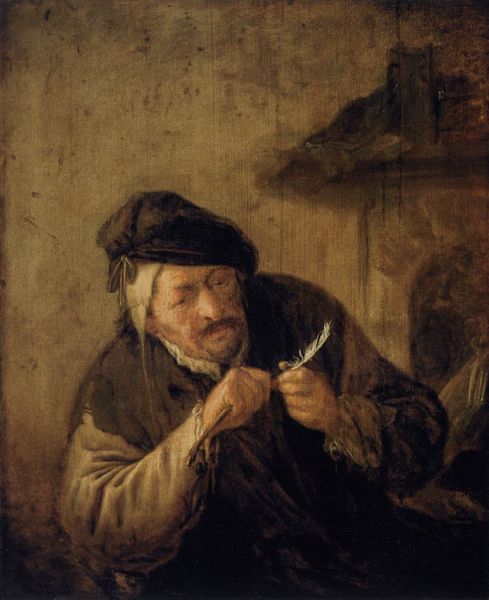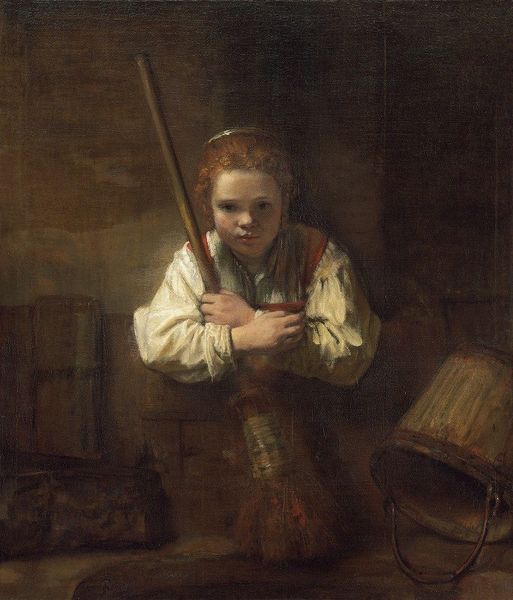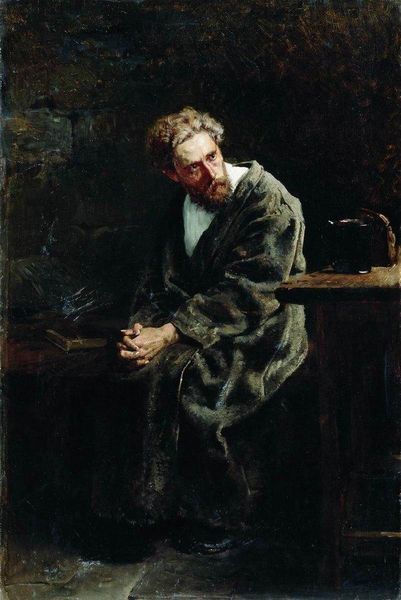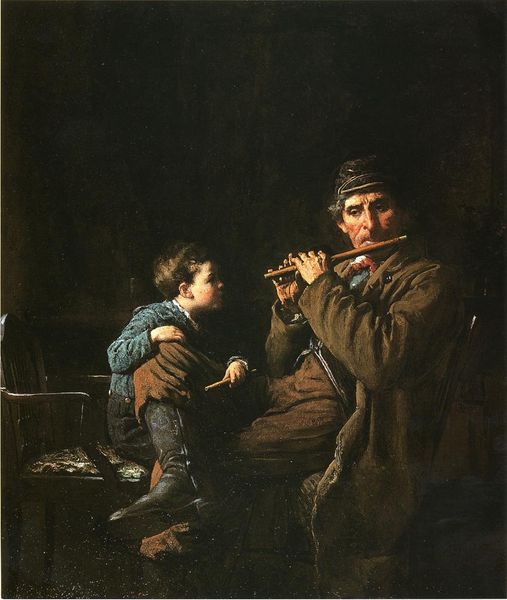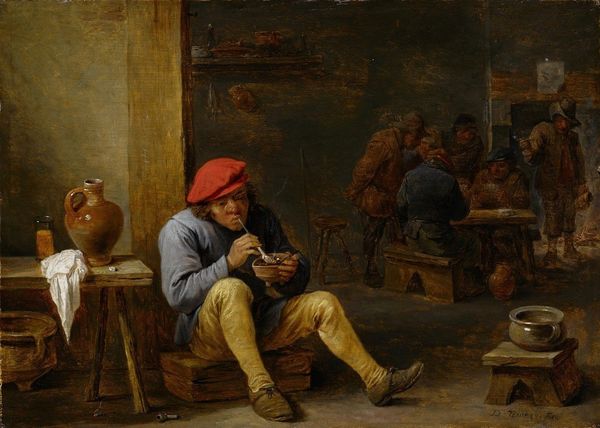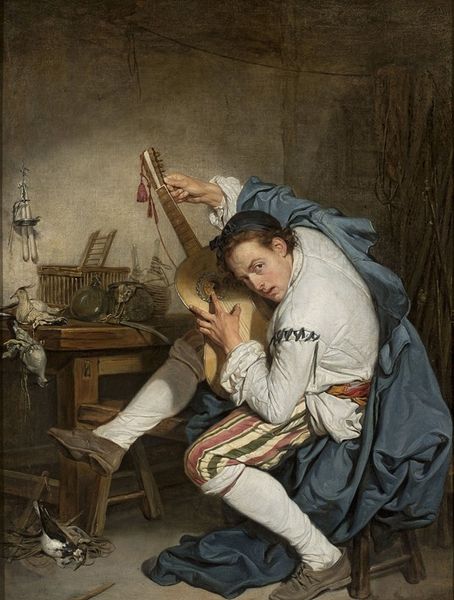
Copyright: Public domain
Curator: Perov’s *Savoyard*, painted in 1864, strikes me immediately with its stark presentation. The boy looks utterly exhausted. Editor: Indeed. I’m drawn to the materiality of the image—the worn leather of his shoes, the rough texture of his clothes, the cold, unforgiving stone wall. The physical circumstances speak volumes about the social reality. How was this painting received at the time? Curator: It caused quite a stir! Exhibited during a period of social reform in Russia, the image of such youthful poverty ignited public debate about child labor and social inequalities. Editor: Knowing this was painted with oil on canvas, what can you tell me about Perov's choices in manipulating that material to convey these realities? Look at the grime under the child’s fingernails or how the fur looks mangy... Curator: Absolutely. Perov utilizes a muted palette and gritty textures to depict the harsh realities of poverty. But I find fascinating the social commentary—the depiction is intended to be realistic. The placement in public exhibitions demanded the educated, well-fed gentry confront these truths and their participation in societal structure. Editor: Precisely. How was art consumption being used to push the envelope of what was considered an acceptable subject for 'high' art. What I see are materials that aren't trying to hide—it almost emphasizes them. You see every stitch, and every tear in those pants. There’s a challenge to the Romantic idealism often associated with portraying children. Instead, we see the direct impact of labor. What happened to change art exhibition at this time to include something like this? Curator: In the context of rapidly modernizing Russia, the art world shifted to encompass subjects mirroring that era’s turmoil and injustice. With evolving patronage, from private aristocratic commissions to the rising prominence of public exhibitions, artists gained agency. Editor: What's also incredible is how art started making that patronage and labour *visible*. How did these new avenues in display affect what he did next? Curator: Perov's willingness to confront sensitive themes made him a pivotal figure, influencing generations of realist artists who fearlessly addressed the complex socio-political realities of Russia, making public spaces sites of active critical engagement. Editor: A powerful demonstration of how the display and making were fused to give form to new modes of seeing in his moment, influencing later movements. Curator: A moment caught in time that made ripples, I agree!
Comments
No comments
Be the first to comment and join the conversation on the ultimate creative platform.


